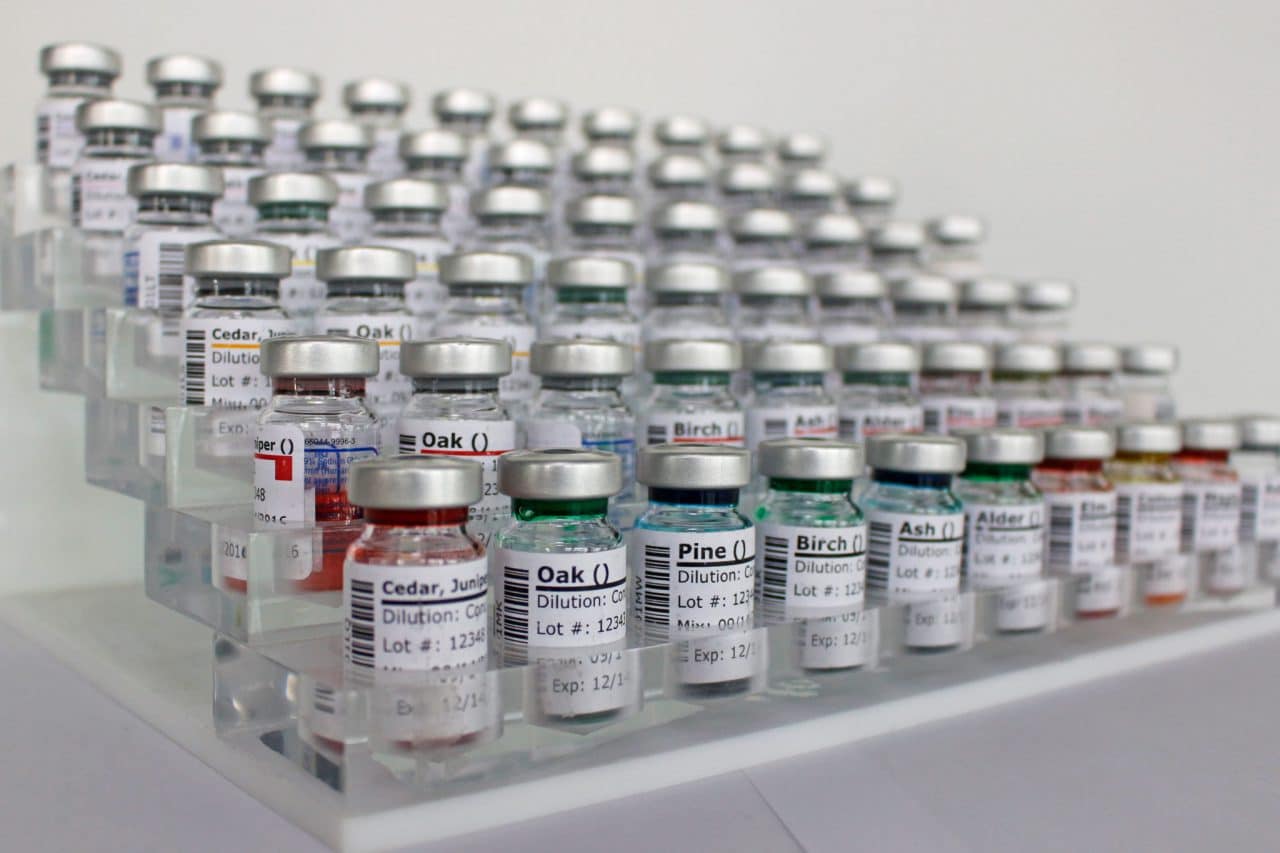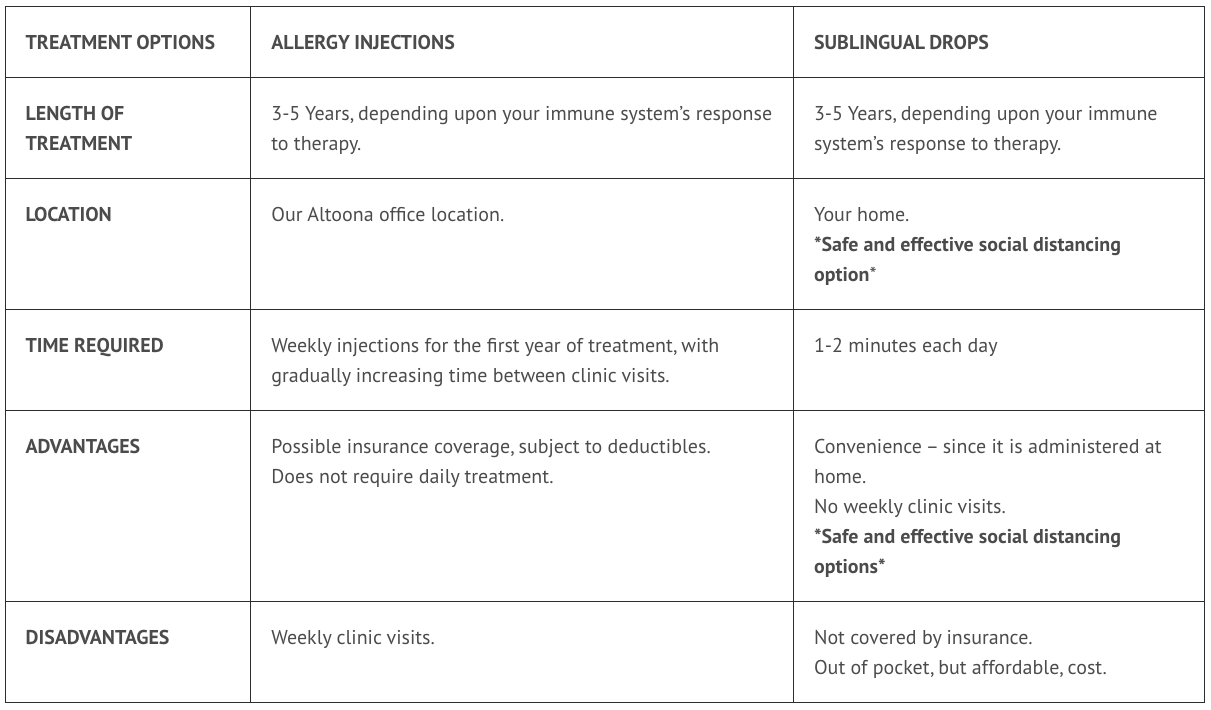Allergies are a widespread condition that affects approximately one out of every five Americans. They occur throughout the year in all types of climates and can be triggered by pollen, mold spores, dust mites, animal dander, food, chemicals, medications and other environmental irritants.
With so many possible causes, finding the source of your allergic response is crucial to treating the symptoms.
There are three types of allergy treatment available: Prevention, medications and immunotherapy (desensitization programs).
The least invasive treatment method for allergies is avoiding the triggers responsible for your symptoms. If you are suffering from allergies to pollen, pet dander or mold, there are a few simple things you can do to reduce contact with these allergens in your environment.
Please refer to these handy allergen management instructions for pollen, pet dander and mold.
Allergy symptoms can often be relieved through the use of over-the-counter or prescription medications and nasal sprays. Medical therapy provides short-term relief and may be enough of a solution for people with temporary or mild to moderate seasonal allergy symptoms.
If your symptoms do not improve with the temporary use of medications, you should consult with an allergist over alternative treatments such as immunotherapy.
Antihistamines are often the go-to drug for treating allergy symptoms. They work by reducing or blocking histamines, chemicals produced by the immune system that are responsible for many common allergy symptoms including runny nose, stuffy nose and itchy, watery eyes.
They are available in tablets, capsules, liquids, nasal sprays and eye drops. Antihistamines can cause side effects such as drowsiness, dry mouth, dizziness and nausea, though newer generation antihistamines have fewer side effects.
Popular antihistamines include:
Decongestants may increase anxiety or cause sleeping difficulty. If you have a medical condition such as glaucoma, high blood pressure, heart disease, thyroid disorder, diabetes or enlarged prostate, consult with a doctor before using. Even if you do not have these medical conditions, you should limit the use of decongestants to three to five days, as they will actually worsen congestion when their effect wears off the longer you use them.
In addition, many antihistamines also contain a decongestant, such as:
Nasal corticosteroids are nasal sprays that help to reduce inflammation of the nasal lining associated with allergies. They can be extremely effective at relieving symptoms, but may cause nosebleeds, nasal dryness and sore throat. Nasal corticosteroids are generally safe to use long-term. Common brands include:
Decongestant nasal sprays are generally available over-the-counter. They provide short-term relief from nasal allergy symptoms but wear off quickly. Overuse can lead to a “rebound effect” in which symptoms worsen. Patients are advised not to use decongestant nasal sprays for longer than three days. Popular brands include:
Allergy eye drops help relieve the symptoms of eye allergies. If you are experiencing itchy or watery eyes, a burning sensation in the eyes, redness and swelling, you can benefit from either over-the-counter or prescription eye drops.
They are available in several different types including antihistamines, anti-inflammatory, decongestants and mast cell stabilizers. Some of the more common brands include:
With so many different types of eye drops available over the counter, it is important to consult your doctor regarding which class is right for you and to make sure they will be compatible with your other medications and health conditions.
Mast cell inhibitors are medications that prevent allergy symptoms such as runny nose or itchy, watery eyes from occurring. They work by inhibiting the release of histamines the immune system produces in response to allergens such as pollen.
They are available in the form of nasal sprays and eye drops, and must be taken a week or two before the start of allergy season, and continued on a daily basis for the duration of the season.
Examples include:
These medications are used to prevent wheezing, difficulty breathing, chest tightness and coughing caused by allergic asthma, as well as treat the symptoms of seasonally and year-round sneezing and stuffy, runny or itchy noses. They work by blocking the action of substances in the body that cause the symptoms of asthma and allergic rhinitis.
These are available by prescription only and examples include:

People who suffer from allergies that don’t respond to medical treatment may find relief from immunotherapy, a method of building tolerance to an allergen by introducing it to the body in small doses over a period of time. It is usually given as injections (allergy shots), but can also be taken orally. When ingested, it is known as sublingual immunotherapy, or allergy drops.

